Although I have something of a reputation for being a gun nut, I’m more of an admirer than an aficionado. Sure, I can tell the difference between most older bolt-action rifles with just a brief inspection (because that’s a particular passion of mine), but the model numbers of the various Glock, SIG and S&W guns leave me cross-eyed with confusion. Unless I actually own or want a particular model, I have little interest in its stablemates, clones, extensions or forerunners.
When it comes to things aeronautical, I’m likewise not one of those obsessive types who can tell at a glance the difference between a Spitfire Mk.III or Mk.IX, but my goodness, I do love the shape of the things:
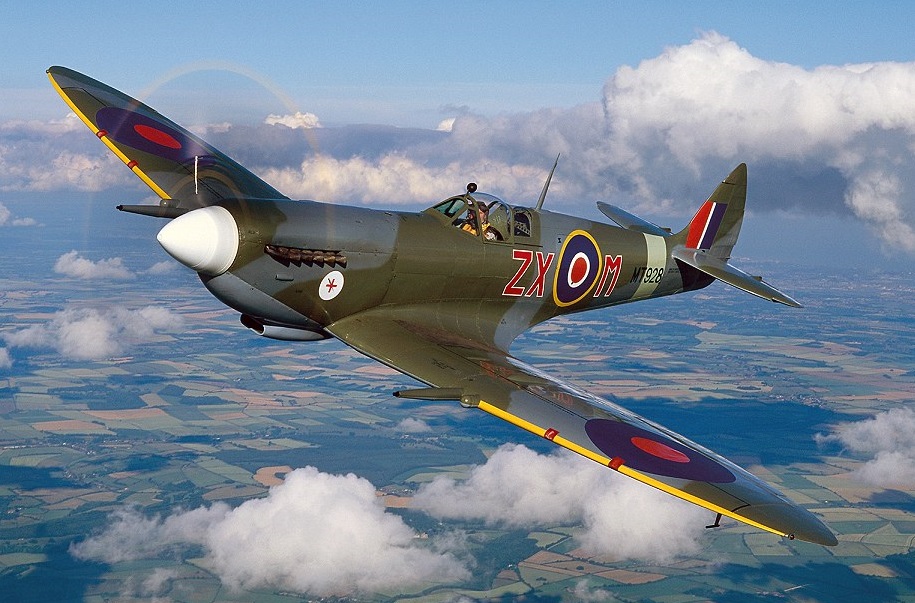
One of the very few regrets of my life is that apart from puttering around with a friend’s ultralight, I never learned to fly and get my PPL, because I would love to have taken a WWII-era fighter aircraft for a quick flight. Even the much-maligned Hawker Hurricane has not escaped my gaze:
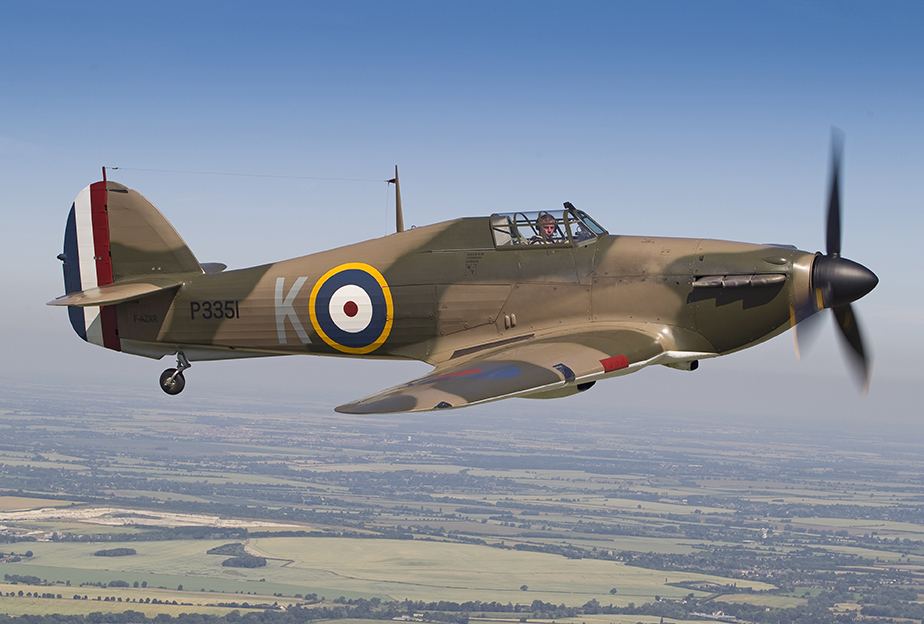
The great WWII flying ace Douglas Bader flew both in action during the Battle of Britain, and his comment was that while he loved the agility and performance of the Spit, he grew to appreciate the Hurri as a rock-solid gun platform that could withstand an incredible amount of punishment — even though its rear fuselage was made entirely of canvas-covered wood.
I’ve seen a Spitfire in the flesh, as it were, as well as its major opponent, the Messerschmitt Bf 109, as both were displayed at the War Museum in Johannesburg.
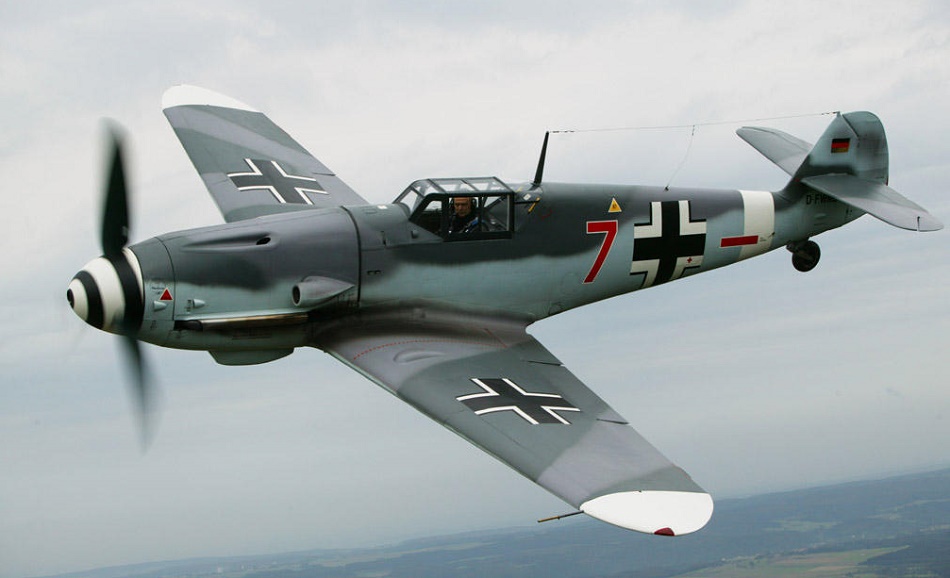
What struck me then, as now, is how small those wonderful aircraft are. Also at the museum was one of the few remaining Me 262 jet aircraft, and by comparison to the dainty 109, it was a great hulking brute of a thing:
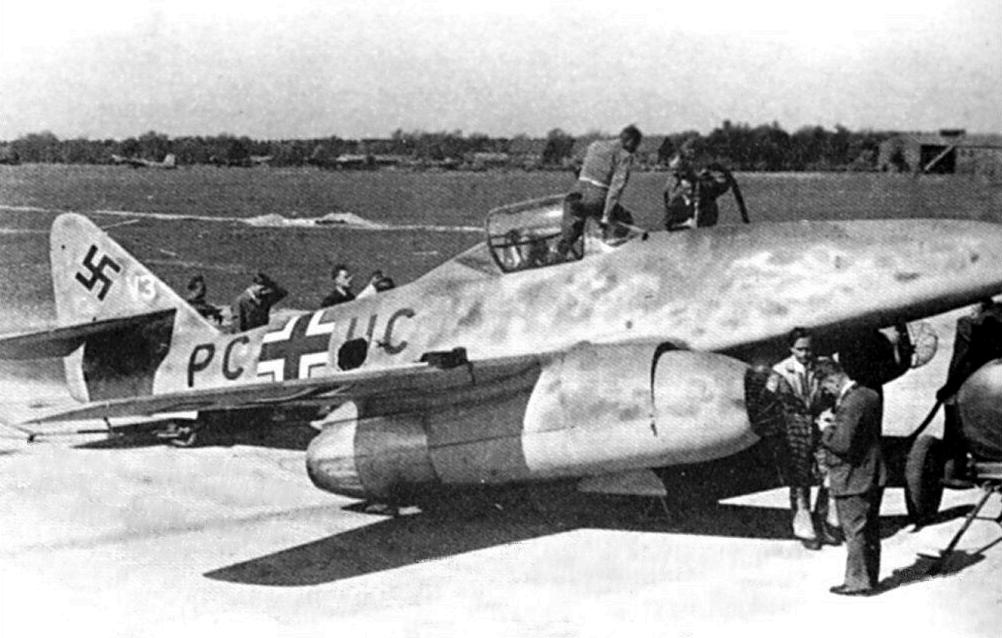
…although I have to tell you, that shark-like fuselage has its own particular attraction for me too.
As a boy, I was fascinated by WWII fighter aircraft and built models of almost all of them: Spitfire, Hurricane, P-51 Mustang, Me 109; you name it, I probably built it. As I’ve aged, I’ve tried to understand just what it is that attracted me (and still does to this day) to these aircraft, and I think I’ve finally figured it out.
These were not the fragile, unreliable and dangerous aircraft of WWI, nor are they the techno-laden jet fighters of the post-WWII era. Instead, they were flying machines which made you feel like you were part of a miracle. The speeds were nowhere close to supersonic (a modern-day Bugatti Veyron has a top speed just 100mph slower than that of a 1939 Hurricane), and honestly, I think my criterion for these WWII fighter planes is one of enjoyment: you’re going fast, but not that fast that you have no time to think about the experience. Kind of like the difference between, say, a Caterham 7 and a Pagani Zonda.
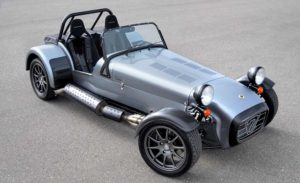
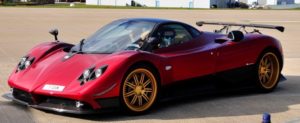
I like both, but I’d rather drive a Caterham than a Zonda for the same reason that I prefer a bolt-action rifle to a full-auto rifle: there’s more of an element of actively making the 7 and the turnbolt work, rather than just controlling the Zonda and (say) a BAR. Speed has little to do with it, although I suspect that the thrill of speed in a Caterham may be every bit as good as in a Zonda, even though the latter may be going half as fast again as the 7. Fast is fast: what’s the difference is how much one can feel it — and I suspect that without a speedometer to tell you the difference, you might not be able to quantify it that much.
So give me a good old WWII aircraft — the aeronautical equivalent of the Caterham — any day of the week.
And to quote a friend in a different context: when I see a pic like this one, parts of me start to tingle that haven’t tingled in a long while.
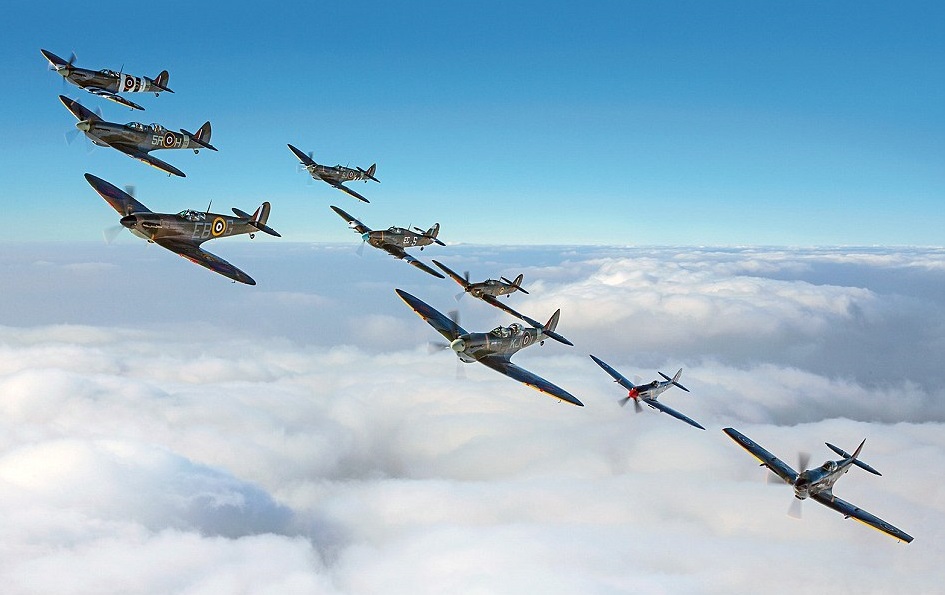
Can you imagine the sound those nine Merlin-engined beauties make as they thunder overhead? I don’t smoke, but I’m pretty sure I’d want a cigarette after that flyover.

Those planes were the ultimate development of piston powered warplanes. They were about to become obsolete with the coming of the jets, but that change was so large that there was really no comparison. I’d love to have gotten a chance to fly any of the WWII fighter planes. The closest I’ve come was a couple flights as a passenger in a T-6 trainer (600 hp) and a couple of hours of dual instruction in a BT-13 (450 hp).
For a dose of raw power, though, when just out of high school I helped work on a B-25 some local enthusiasts had. They couldn’t quite afford to get it airworthy, but we would run up the engines, causing the trees behind it to wave like they were in a hurricane. I once tagged along on a high speed taxi test out on the runway. When the throttles go forward and those R2600s start to roar, you know there’s some power there.
As reason why I have no interest in ever owning a car or motorcycle with an automatic transmission. And don’t get me started on “autonomous” cars.
Years of pushing Series 70 Landcrusiers around the linear potholes of PNG, plus arthritis in my left kneecap has made me appreciate the appeal of the automatic transmission. Especially in heavy traffic.
But on a sports car, automatic is still just wrong.
I’m right there with you. My dad was a B-17 pilot. He flew 35 combat missions with this group—
http://www.447bg.com/
Here is something I thought you might enjoy (four Merlins at the 2:30 mark)—
https://www.youtube.com/watch?v=nKU0uQki5Dc
yes, wwii airplanes are a wonder to behold. I have seen a P51 in flight and it is a wonderous machine. As a side, the one on the lower right with the red spinner looks more like a P51 than a spitfire. Not sure, but suspicion.
Not getting a PPL is one of my regrets and I hope to correct it yet. Since I am not dead there is still time.
Red spinner looks to have a five bladed prop. Spit Mk XIV?
Pointy wing-tips….Spitfire
Blunt wing-tips ….Mustang
…unless it’s a Seafire, with chopped wingtips for carrier storage.
If we’re going to try to identify the pictured planes, I see a couple of Hurricanes in the back row. I think all the rest are variants of the Spitfire, though I’m not positive about the one with the squared of wingtips. In any case the sound of that many Merlins at once would be fantastic.
The last Indy 500 I was at, the fly-over was Gen. Chuck Yeager and some friends in P51s, and against orders, they came in. lifted over the turn 4 grandstands, dropped (not quite as low as he had during practice) down to the level of the top tier of front straight grandstands, flew down the straight and up again to the left to clear the track.
Yeah, that was great.
During practice the month before, he was getting very low, and a buddy’s dad (A pilot himself)said he was in the upper portion of the lower stands, in the shade, and was able to look down into the plane to see his hands on the stick.
They got on him and the rest of the time, until the race, he stayed at the top of the roof over the stands.
I used to work at the airport in New Orleans, and I hadn’t gotten to fuel any WW2 warbirds, but did get a Cessna built jet trainer, and 2 F-104 Star Fighters privately owned. I like planes, racing, motorcycle and guns likely because it seems to run in the family. Grandpa and his sisters were Golden Age Barnstormers, he loved Indy, and went many years until Bill Vukovich died, and he stopped going. He rode motorcycles when he could, and after losing his youngest son to cancer (agent orange got him) had commented that, when he went, he wanted to go on his Honda. He had a massive coronary while out on a ride one day.
Until some rat bastards stole it from my parents house, I used to own his Winchester .30-30 converted to .32 Special.
The sound of the Merlin –
In Beverly Hills for one of the first Ferrari on Rodeo Drive events, the street is filled with hundreds of new/old/whatever Ferrari’s in all their glory drawing admiring glances from all; when, overhead, is heard the distinctive sound of that most glorious of V-12 motors, a Rolls-Royce Merlin, as a P-51D does a fly-over, and another, and another.
Driving home in a V-12 Ferrari felt different that day.
We love those airplanes because even if we can’t articulate it, we recognize the refined fit of form to function, and understand that those airplanes were the apex of their brief 30 year era of technical relevance, that of the propeller driven visual conditions aerial gunfighter.
Their very category now being obsolete, we shall not see their like ever again.
Interesting note:
All the online dictionaries list antonyms of “obsolete” that refer to the current cutting edge. It would seem that we’re missing an opposite of obsolete that is anchored to a given technology context.
There’s a great series of alt history WWII novels by Stewart Slade which explores the tech of the era quite a bit. Since in his timeline the war continues until 1948 (when LeMay’s B-36s nuke Germany flat), you get to see some of the proposed last generation piston engined fighters in action.
It’s not just the airplanes that were small. A college buddy of mine, a Chinese guy from San Francisco, told me that his father – a couple of inches over 6′ and IIRC ~220 in his prime – was within 1/2″ of being too tall to fly fighters in the Pacific. I don’t remember what he was flying, though.
You’re spot on about the WWII era planes going fast but not fast enough to miss the experience.
Every so often around father’s day in June, stupid made up holiday, there is a group that brings around WWII era trainers that you can fly for an absurd amount of money for a ridiculously short period of time. If I can’t afford a pilot’s license I just might go fly a trainer.
Jim
This was written by my (Grand) Uncle Ed who was a Spitfire Pilot during the war. Sadly, he passed on a few years back.
About 20 years ago, I got an email from someone in Poland looking for information about a certain plane called “Florence” which was preserved in a Polish Museum.
Florence was the name of his fiancee, a woman who later became his wife. She is still with us. The plane was the one my Uncle flew.
—
43 Years Ago as I Remember It.
A typical day might start an hour before daybreak by being wakened for a front line patrol. For sleeping quarters in Normandy we dug holes in the ground about two feed deep and large enough to accommodate four cots. Over this we pitched our tents, and were thus protected from rain and shrapnel.
A poor breakfast, consisting of a slice of bread, cold greasy sausage and a cup of tea prepared by a sleepy cook would sustain us until we returned for a normal breakfast at the regular time after 7am.
After being briefed for our flight by the Intelligence Officer, we would climb into the back of a truck and ride to our aircraft dispersal location, by the dirt runway, on French farmland.
The long nose of the Spitfire obstructed forward vision while taxying to and from the runway. To overcome this, the coupe top was left open, the seat was raised and the aircraft was taxied in a zig zag path to gain forward vision out of alternate sides.
Taking off in closely following pairs on a dry day would raise a thick cloud of dark brown dust a hundred feet in the air. Seats lowered, coupe tops closed, wheels up and into a climbing turn to form “battle formation” and we set course to carry out our mission.
Each squadron had about twenty five pilots who lived together much like a family unit. There were three or four squadrons to a wing. We were normally on duty for 24 hours and off for the next 24 hours starting and ending at 1pm. This meant being divided in two groups so that half of the squadron’s pilots were on duty at any given time.
Various duties where assigned to Spitfire squadrons such as Front line patrols, armed reconnaissance, which meant strafing any military vehicles or targets to be found, Bomber escort whereby we preceded bombers over their target area and escorted them on their return, dive bombing, low level bombing etc.
One day four of us provided fighter escort for Winston Churchill, who was being flown in in a ‘DC3’ aircraft from Brussels in Belgium to Eindhoven in Holland. On another day, I accompanied the famous Johnnie Johnson in search of ground targets for the wing to attack.
To fly the Spitfire was pure joy. I believe it would be true to say that any pilot who did not love the Spitfire never flew one.
Shortly before his death, John Gillespie Magee wrote a on a postcard to his mother the poem entitled “High Flight”. He was a young R.C.A.F. “Spit” pilot who was able to capture in words what I’m sure was felt by most of us.
By Ed Mann
High Flight
Oh, I have slipped the surly bonds of earth,
And danced the skies on laughter-silvered wings;
Sunward I’ve climbed and joined the tumbling mirth
Of sun-split clouds – and done a hundred things
You have not dreamed of – wheeled and soared and swung
High in the sunlit silence. Hovering there,
I’ve chased the shouting wind along and flung
My eager craft through footless halls of air
Up, up the long, delirious, burning blue
I’ve topped the wind-swept heights with easy grace,
Where never lark, or even eagle flew;
And, while with silent lifting mind I’ve trod
The high unsurpassed sanctity of space,
Put out my hand and touched the face of God.
John Gillespie Magee
Pilot Officer Gillespie Magee
No 412 squadron, RCAF
Killed 11 December 1941
I must highly recommend visiting the annual Experimental Aircraft Association convention in Oshkosh, Wisconsin’s “Airventure”. If you want to see plenty of classic warbirds close up and see many in flight, you won’t be at all disappointed. If you are a licensed pilot or join the EAA you can walk right up to and around them when they’re on the ground, along with a huge range of antique, classic and homebuilt aircraft as well.
I’ve never been to another event with as many people that was as friendly, enthusiastic and, remarkably, without a single piece of litter in sight – that’s the kind of crowd it brings from around the world. And almost universally freedom loving folks that we can enjoy. How can you beat that?
I’m going to be the spoilsport and point out that those late piston-engined fighters look nice, but have appalling handling qualities. I got a P-51 flight. Very educational, precisely because it was a pig.
For fun, give me a fully aerobatic mount like an Extra 230….or a jet warbird. Sabers and Hunters were excellent. And I’ll vouch for the Canadair Tutor. A real sleeper, not the sexiest machine on the ramp but a delight in the air.
No pilot certificate is required if you ever want to take a ride in numerous WWII aircraft, however money makes the prop go around! There are several individuals with warbirds that offer rides, but the most common are organizations like the Collins Foundation and the Commemorative Air Force (of which I am a member.) The Commemorative Air Force is in the process of moving their headquarters and building a new museum/airbase at Dallas Executive Airport, and will have numerous aircraft based there when it is finished. I’m a member of the DFW Wing based down in Lancaster, south of Dallas. We offer rides in all four of our aircraft, the R4D (Navy variant of the DC-3), BT-15, Stearman, and L-5. No fighters unfortunately! There are usually people around every Saturday if you ever want to stop by and take a gander around or go for a ride, we always welcome visitors.